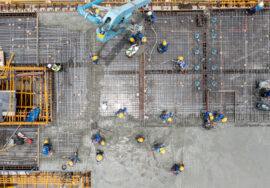The Importance of Safety Standards in Construction

Safety standards in construction are essential for ensuring the well-being of workers, protecting the integrity of projects, and maintaining regulatory compliance. In an industry fraught with hazards, implementing robust safety standards is crucial for minimizing risks and promoting a culture of safety.
Why Safety Standards Matter
Construction sites are inherently dangerous environments. Workers face numerous risks, from falls and machinery accidents to exposure to hazardous materials. Safety standards play a pivotal role in mitigating these risks, ensuring that construction projects proceed without compromising worker safety.
Key Benefits of Safety Standards:
- Prevention of Accidents: By adhering to safety standards, construction sites can prevent accidents and injuries. Proper training, safety equipment, and protocols help reduce the likelihood of incidents.
- Compliance with Regulations: Safety standards ensure that construction companies comply with local and national regulations. This compliance helps avoid legal issues and potential fines.
- Enhanced Productivity: A safe work environment promotes higher productivity. Workers who feel secure are more likely to focus on their tasks, leading to efficient project completion.
Implementing Effective Safety Standards
To ensure safety on construction sites, it’s essential to implement effective safety standards. Here are some key components:
Comprehensive Training Programs
Training is a cornerstone of effective safety standards. Workers should receive training on how to handle equipment safely, identify hazards, and respond to emergencies. Regular refresher courses help maintain high safety awareness.
Use of Personal Protective Equipment (PPE)
PPE such as helmets, gloves, and safety glasses are crucial for protecting workers from potential hazards. Ensuring that all workers are equipped with and correctly use PPE is a fundamental safety measure.
Regular Inspections and Maintenance
Frequent inspections of equipment and the construction site are necessary to identify and address potential hazards. Regular maintenance of machinery and safety systems helps prevent malfunctions that could lead to accidents.
Clear Safety Protocols
Establishing clear safety protocols, including emergency response plans and procedures for reporting hazards, ensures that all workers know how to act in the event of an incident. These protocols should be easily accessible and communicated effectively.

Promoting a Safety Culture
Creating a culture that prioritizes safety involves encouraging workers to adhere to safety standards and report unsafe conditions. Leadership should model safe behavior and recognize efforts to maintain a safe work environment.
External Resources on Safety Standards
For further insights into safety standards in construction, consider exploring these resources:
Conclusion
Safety standards in construction are not just regulatory requirements but essential practices for protecting workers and ensuring project success. By implementing comprehensive training programs, utilizing PPE, conducting regular inspections, and promoting a safety-first culture, construction companies can mitigate risks and create a safer work environment.
For more information on implementing safety standards or to discuss your construction safety needs, contact us today!
Read more related articles to enhance your knowledge and make informed decisions
10 Essential Steps in the Building Construction Process
How to Choose the Right Materials for Your Construction Project







